What’s the Story?
Brick-and-mortar retail has faced unprecedented challenges amid the Covid-19 pandemic due to temporary store closures and a rapid consumer shift to the online channel. In 2021, the acceleration of vaccinations and the lifting of restrictions are prompting consumers to return to more normal ways of living; brands and retailers must reimagine the store experience in order to attract shoppers back to physical locations in a post-crisis world.
We explore how brands and retailers globally are doing this and present examples of the innovative store formats and initiatives that are emerging in the beauty industry.
Why It Matters
Many beauty players launched, or enhanced, their digital offerings amid pandemic-driven store closures to replicate the in-store experience for shoppers online and mitigate lost sales opportunities. According to data company Unacast, beauty and grooming stores in the US experienced a foot traffic decline of 31% in 2020.
Now, as the world recovers from Covid-19, brands and retailers must look to integrate their digital and physical offerings to draw shoppers back to stores and thus maximize revenue through both channels. A positive sign for the beauty sectors is that some 47% of US shoppers still prefer to shop beauty products in-store, according to a March 2021 consumer survey by payment company Klarna.
How Beauty Brands and Retailers Are Reimagining Their Stores
Digitally Infused Stores—Leveraging Technology To Enhance the Shopping Experience
Beauty has typically been a high-touch shopping category, with consumers wanting to see and try out products before they make purchases. However, according to a survey conducted by consulting firm Alvarez & Marsal in December 2020, some 42% of US female beauty shoppers said they do not feel comfortable using shared beauty testers.
Consumers’ heightened hygiene concerns around in-store product testers has pushed brands to rethink how they deliver a safe and contactless product trial experience, turning to technology such as QR codes, virtual try-ons and more. The pandemic has catalyzed consumers’ increased adoption of digital technologies, and as retail stores reopen, brands and retailers have been integrating more digital elements and fully embracing omnichannel retail. Technologies facilitate frictionless, experiential shopping journeys, and they also enable brands and retailers to garner data insights that feed into omnichannel strategies—for example, by building customer profiles and implementing personalized marketing to increase conversion.
Beauty companies have increasingly been deploying contactless technologies and other innovative tools in-store.
MAC Cosmetics: Virtual mirrors, digital touchscreens and QR codes
MAC Cosmetics debut its Innovation Lab in Queens, New York, in September 2020. Developed in collaboration with digital agency Valtech, the new concept tests a variety of omnichannel and contactless experiences.
- At the lipsticks counter, MAC leverages data analytics, RFID (radio-frequency identification) and AR to allow customers to virtually try on any lipstick. While trying out, shoppers can scan a personal QR code to create individual “MAC Pass”, which saves consumers’ favorite products, shades, and AR images for them to access later.
According to MAC Cosmetics, the Innovation Lab saw a 200% increase in engagement compared to average store engagement in the first month since opening. MAC Pass also witnessed strong engagement, with more than one-third of in-store customers using the capability.
[caption id="attachment_128542" align="aligncenter" width="720"]
 Source: MAC Cosmetics
Source: MAC Cosmetics[/caption]
Shiseido: Virtual shopping, virtual try-on and contactless product testing
Shiseido opened its global flagship store in Tokyo, Japan. The store aims to employ digital technology to the greatest extent possible and limit human contact.
- When customers enter the store, store associates hand out a special wristband that enables each shopper to add products to their virtual shopping cart simply by holding the band over the sign next to the products. When they are ready, they can then pick up their products at checkout.
- There are multiple automatic testers that dispense Shiseido’s iconic serum and foundation, facilitating a contactless, hygienic testing experience.
- At a station called Digiskin Tester, a digital tester allows shoppers to check and compare details of different products and answer a questionnaire to receive recommendations of skincare products that fit their needs.
- Shoppers can discover detailed information of Shiseido’s makeup products at a dedicated station and simulate how the products would look on them on a mirror-like touch screen.
In addition, to provide an omnichannel experience, Shiseido launched a virtual store that recreates the flagship store experience with VR. Online viewers can browse different floors and stations, watch dedicated video content, and discover and purchase products.

[caption id="attachment_128544" align="aligncenter" width="720"]
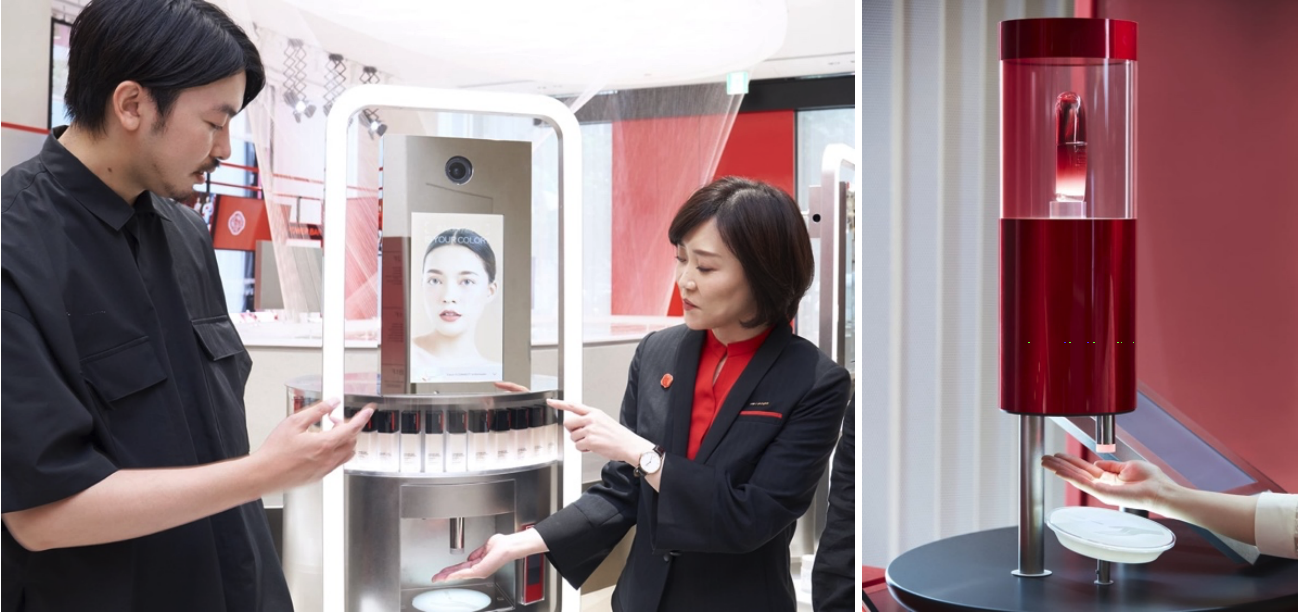 Source: Shiseido
Source: Shiseido[/caption]
Tom Ford: Virtual try-on, QR codes and contactless product testing
Tom Ford opened its largest beauty store globally in Guangzhou, China, in September 2020, and digital is a key component of the store. The exterior of the store features a 40-foot digital screen showcasing the brand’s campaign and latest products. Inside, the Tom Ford Beauty section has integrated technologies through which shoppers can browse products in a digitally immerse experience.
- When consumers place a fragrance bottle on an RFID-enabled stand, a screen displays a fragrance discovery video, revealing the story behind each fragrance line. There is also a touchless fragrance sampler machine that automatically sends out samples if it detects consumers nearby.
- In the cosmetics area, consumers can try out various makeup products virtually. All the products can be purchased online through QR-code scanning.

[caption id="attachment_128546" align="aligncenter" width="720"]
 Source: Tom Ford
Source: Tom Ford[/caption]
Immersive Stores—Engaging and Building a Connection with Consumers
Prior to the pandemic, the role of brick-and-mortar stores had been shifting from a traditional point of purchase to a venue of experiential retail. While the experience economy has taken a hit due to Covid-19, we have seen renewed consumers’ appetite for interactive retail experience in recovering countries such as China, where consumers are getting back to normalcy. With the swift rollout of vaccinations and growing consumer optimism, experiential shopping is set to again become increasingly important for brands and retailers globally to differentiate themselves from the competition and drive traffic to physical stores.
Pop-Up Locations
Although not entirely new, immersive pop-ups were the first format to regain popularity in China post pandemic. allowing beauty brands to engage and excite shoppers. Many players have chosen to open pop-up locations at
China’s booming duty-free stores to capitalize on trend of repatriation of overseas spending.
- SK-II launched its first “Social Retail” pop-up in Hainan’s Haitang Bay Duty Free Shopping Center in May 2021. The pop-up is inspired by SK-II’s new six-part animated anthology titled “VS,” comprising films that seek to tackle the social pressures impacting women today. Through a mini program on Chinese social media platform WeChat, visitors can watch the films on their mobile phones, as well as participate in immersive games as they wait in line. Gamification can be an effective way to increase consumers’ time in-store, boost engagement and expedite the customer-acquisition process. In addition, shoppers can also access personalized and contactless skin analysis with SK-II’s Mini Magic Scan to receive customized product recommendations.
[caption id="attachment_128547" align="aligncenter" width="720"]
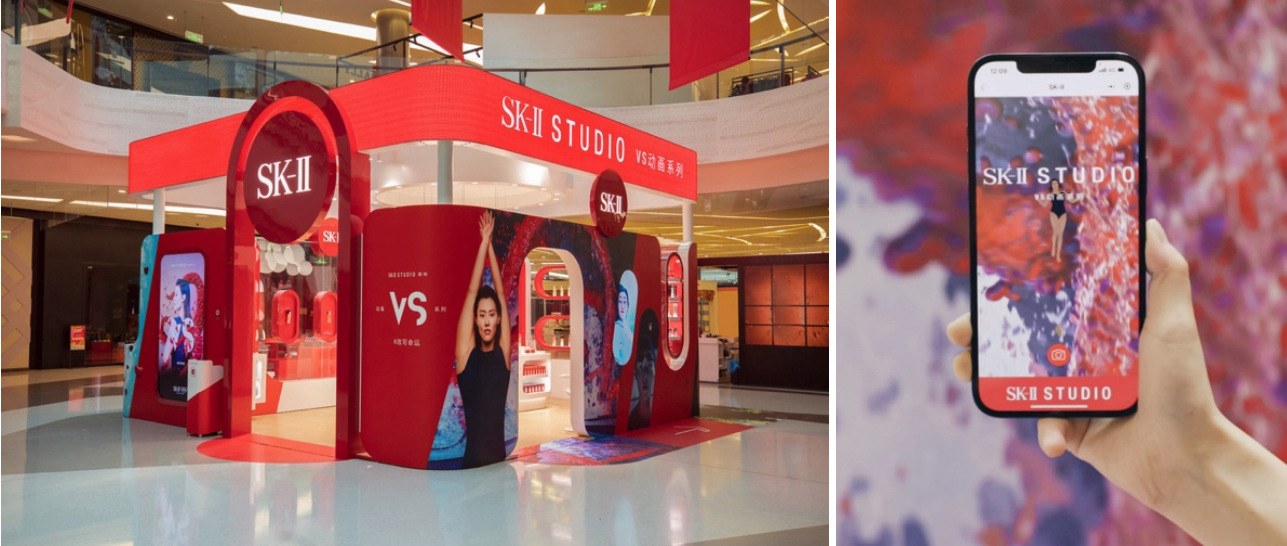 Source: SK-II
Source: SK-II[/caption]
Experiential Stores
- British luxury retailer Harrods unveiled its first beauty store, H Beauty, in September 2020 at a shopping mall in Essex, England. Following the success of the store, the retailer opened a second H Beauty location in Milton Keynes in April 2021. Both stores carry a diverse portfolio of premium and luxury beauty brands, but slightly different assortments catered to local communities. What sets H Beauty apart from other retailers are the experiences offered in-store, which includes exclusive bespoke facials, one-to-one consultations, beauty classes and personalization services, as well as a champagne bar. The inclusion of on-site food services means the stores serve as social destinations to attract local consumers.
[caption id="attachment_128548" align="aligncenter" width="720"]
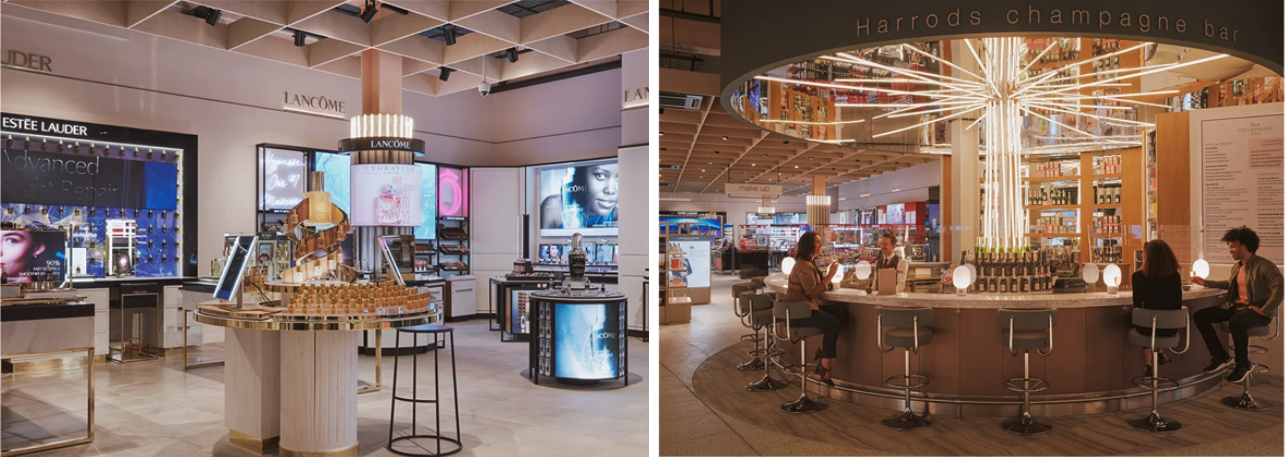 Source: Harrods
Source: Harrods[/caption]
- In May 2021, L’Oréal opened its global flagship store in downtown Shanghai, which seamlessly integrates with the brand’s WeChat mini program. The store lets shoppers experience the elegance of the brand’s French heritage—they can take an immersive bike ride along the streets of Paris—and collect rewards for engaging in the experience, such as discount points. Visitors can watch and interact with influencers at an in-store livestreaming station. Other stations feature skin-analysis tools, a product recommendation counter, a sample vending machine and more. Each visit is linked to customers’ WeChat account via its mini program, thus consolidating the entire offline shopping journey and helping L’Oréal to strengthen its connection with consumers after they have left the store.
[caption id="attachment_128549" align="aligncenter" width="720"]
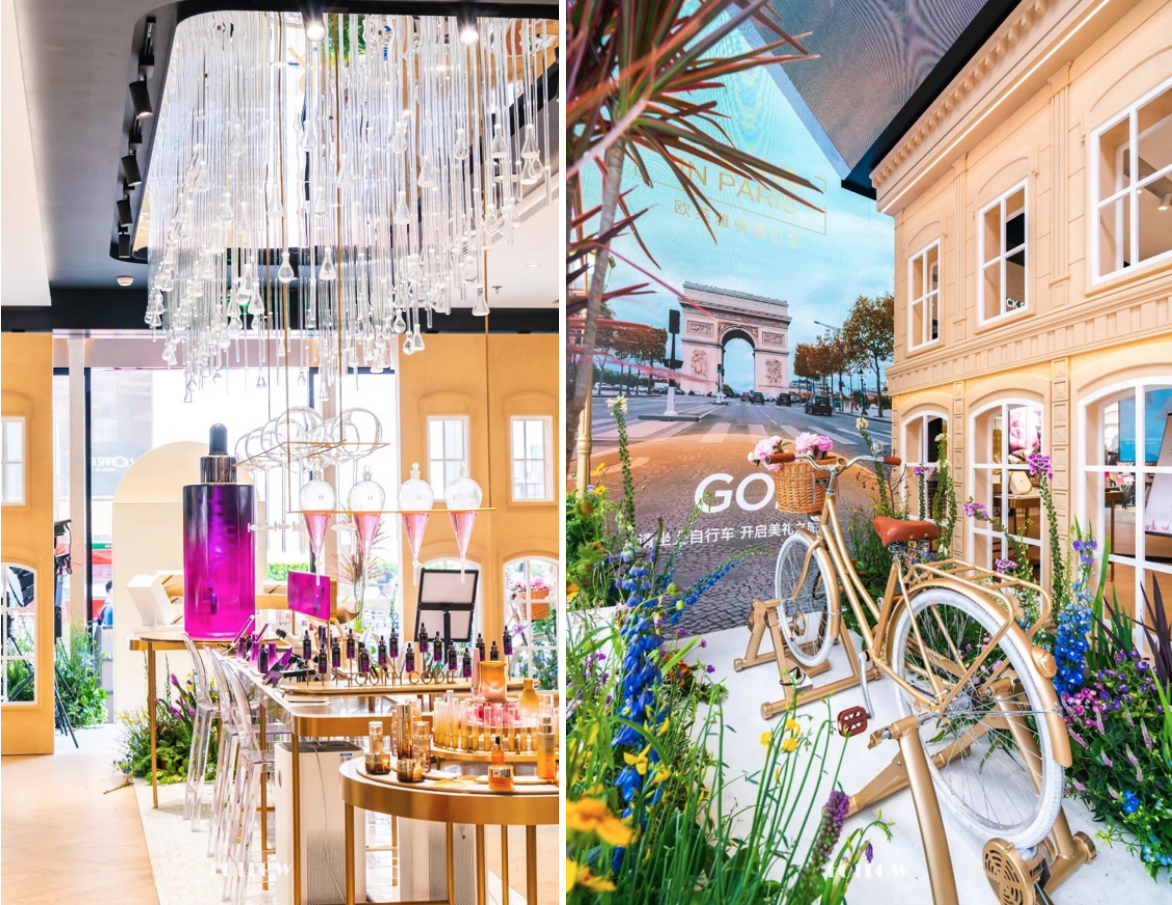 Source: L’Oréal official WeChat account
Source: L’Oréal official WeChat account[/caption]
What We Think
The pandemic has bolstered the prominence of online shopping, but brick-and-mortar retail remains an integral part of consumers’ beauty journey. Beauty giants such as L’Oréal and Estée Lauder have already reported a return of in-store traffic in some geographic locations where the pandemic has eased.
In the future, we view omnichannel and experiential retail as critical for the beauty sector to maximize both digital and physical store sales, with digital technologies set to play a key role in reimagining the shopping experience. We expect to see more brands and retailers harness technology to drive traffic to brick-and-mortar locations.
Implications for Brands/Retailers
- The line between digital and physical continue to blur in light of the pandemic. According to a Coresight Research survey conducted on May 3, 2021, over half of US consumers stated that the ability to view and purchase the same products in-store and online is important to them when deciding what retailers or brands to shop with. In-store, brands and retailers should establish omnichannel operations—for example, they could encourage shoppers to sign up online and use technologies to track the offline shopping journey; this would enable brands to build consumer profiles and implement personalized marketing to increase conversion.
- Consumers still want to try on beauty products before making a purchase, so brands and retailers should rethink ways to achieve this while mitigating safety concerns. Virtual try-ons are becoming a must-have. As technologies advance, brands and retailers should continue to upgrade digital capabilities, potentially working with technology startups to be innovative in this field—for example, beauty innovator Perfect Corp introduced new non-touch features such as gesture and voice control for virtual try-ons that deliver a truly contactless experience.
- While experiential shopping moved online in the Covid-19 era, consumers are becoming more comfortable returning to stores with accelerating vaccination rollout. In countries such as China, where reported new cases are low, shoppers are revisiting brick-and-mortar locations, and stores with experiential elements are clear winners. We expect this will be the case in the West too. To capture this opportunity early, brands and retailers should make efforts to transform stores into experiential destinations. This can include adding gamification features to excite consumers, building interactive stations, hosting livestreaming or entertainment events, offering beauty classes and providing other add-on services.
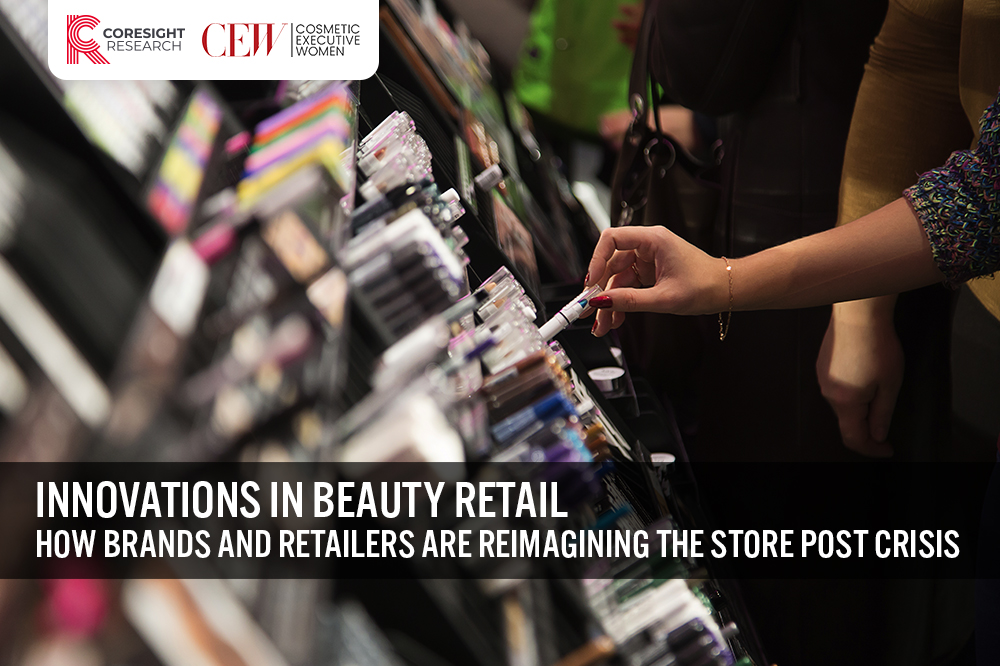
 Source: MAC Cosmetics[/caption]
Shiseido: Virtual shopping, virtual try-on and contactless product testing
Shiseido opened its global flagship store in Tokyo, Japan. The store aims to employ digital technology to the greatest extent possible and limit human contact.
Source: MAC Cosmetics[/caption]
Shiseido: Virtual shopping, virtual try-on and contactless product testing
Shiseido opened its global flagship store in Tokyo, Japan. The store aims to employ digital technology to the greatest extent possible and limit human contact.
 [caption id="attachment_128544" align="aligncenter" width="720"]
[caption id="attachment_128544" align="aligncenter" width="720"] Source: Shiseido[/caption]
Tom Ford: Virtual try-on, QR codes and contactless product testing
Tom Ford opened its largest beauty store globally in Guangzhou, China, in September 2020, and digital is a key component of the store. The exterior of the store features a 40-foot digital screen showcasing the brand’s campaign and latest products. Inside, the Tom Ford Beauty section has integrated technologies through which shoppers can browse products in a digitally immerse experience.
Source: Shiseido[/caption]
Tom Ford: Virtual try-on, QR codes and contactless product testing
Tom Ford opened its largest beauty store globally in Guangzhou, China, in September 2020, and digital is a key component of the store. The exterior of the store features a 40-foot digital screen showcasing the brand’s campaign and latest products. Inside, the Tom Ford Beauty section has integrated technologies through which shoppers can browse products in a digitally immerse experience.
 [caption id="attachment_128546" align="aligncenter" width="720"]
[caption id="attachment_128546" align="aligncenter" width="720"] Source: Tom Ford[/caption]
Immersive Stores—Engaging and Building a Connection with Consumers
Prior to the pandemic, the role of brick-and-mortar stores had been shifting from a traditional point of purchase to a venue of experiential retail. While the experience economy has taken a hit due to Covid-19, we have seen renewed consumers’ appetite for interactive retail experience in recovering countries such as China, where consumers are getting back to normalcy. With the swift rollout of vaccinations and growing consumer optimism, experiential shopping is set to again become increasingly important for brands and retailers globally to differentiate themselves from the competition and drive traffic to physical stores.
Pop-Up Locations
Although not entirely new, immersive pop-ups were the first format to regain popularity in China post pandemic. allowing beauty brands to engage and excite shoppers. Many players have chosen to open pop-up locations at China’s booming duty-free stores to capitalize on trend of repatriation of overseas spending.
Source: Tom Ford[/caption]
Immersive Stores—Engaging and Building a Connection with Consumers
Prior to the pandemic, the role of brick-and-mortar stores had been shifting from a traditional point of purchase to a venue of experiential retail. While the experience economy has taken a hit due to Covid-19, we have seen renewed consumers’ appetite for interactive retail experience in recovering countries such as China, where consumers are getting back to normalcy. With the swift rollout of vaccinations and growing consumer optimism, experiential shopping is set to again become increasingly important for brands and retailers globally to differentiate themselves from the competition and drive traffic to physical stores.
Pop-Up Locations
Although not entirely new, immersive pop-ups were the first format to regain popularity in China post pandemic. allowing beauty brands to engage and excite shoppers. Many players have chosen to open pop-up locations at China’s booming duty-free stores to capitalize on trend of repatriation of overseas spending.
 Source: SK-II[/caption]
Experiential Stores
Source: SK-II[/caption]
Experiential Stores
 Source: Harrods[/caption]
Source: Harrods[/caption]
 Source: L’Oréal official WeChat account[/caption]
Source: L’Oréal official WeChat account[/caption]